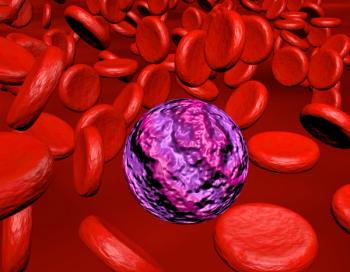
Equine ATG as the First-Line Treatment for Aplastic Anemia
Equine ATG has been used for the treatment of severe aplastic anemia since the 1980s. Rabbit ATG is used in many parts of the world including South America, Japan, and European countries. The results of a randomized study of equine versus rabbit ATG showed that rabbit ATG was inferior to equine ATG.
Acquired aplastic anemia is a rare hematological disorder presenting with pancytopenia and a predominantly empty marrow. It is a deadly disease without treatment, and patients usually succumb due to infection and bleeding. Its pathobiology involves autoimmunity and destruction of the hematopoietic stem cells and progenitor cells by T cells and cytokines. Allogeneic hematopoietic stem cell transplantation (HSCT) is the most effective therapeutic modality, which can be used only for younger patients and those who have matched donors.
Immunosuppressive therapy with antithymocyte globulin (ATG) is an effective therapy for the management of severe aplastic anemia in patients who are not candidates for HSCT. ATG is an animal-derived product containing polyclonal antibodies, which are generated in either horse (Atgam, Lymphoglobulin, and Thymogam) or rabbit (Thymoglobulin) by inoculation with human thymocytes.
Equine ATG has been used for the treatment of severe aplastic anemia since the 1980s. However, it is not available in many parts of the world including South America, Japan, and European countries, where rabbit ATG is used. The results of a randomized study of equine versus rabbit ATG in severe acquired aplastic anemia involving 120 patients were presented at the 52nd American Society of Hematology (ASH) annual meeting in Orlando last December, which showed that rabbit ATG was inferior to equine ATG. The hematologic response rate at 3 months was 62% in patients treated with equine ATG, compared with 33% in patients randomized to rabbit ATG.[1]
Earlier this month the results of a longer follow-up of 839 days for the same study were
References:
1. Scheinberg P, Wu CO, Sheinberg P, et al. A randomized trial of horse versus rabbit antithymocyte globulin in severe acquired aplastic anemia. Blood. 2010;116 [Abstract LBA-4].
2. Scheinberg P, Nunez O, Weinstein B, et al. Horse versus rabbit antithymocyte globulin in acquired aplastic anemia. N Engl J Med. 2011;365:430–408.
Newsletter
Stay up to date on recent advances in the multidisciplinary approach to cancer.


















































































